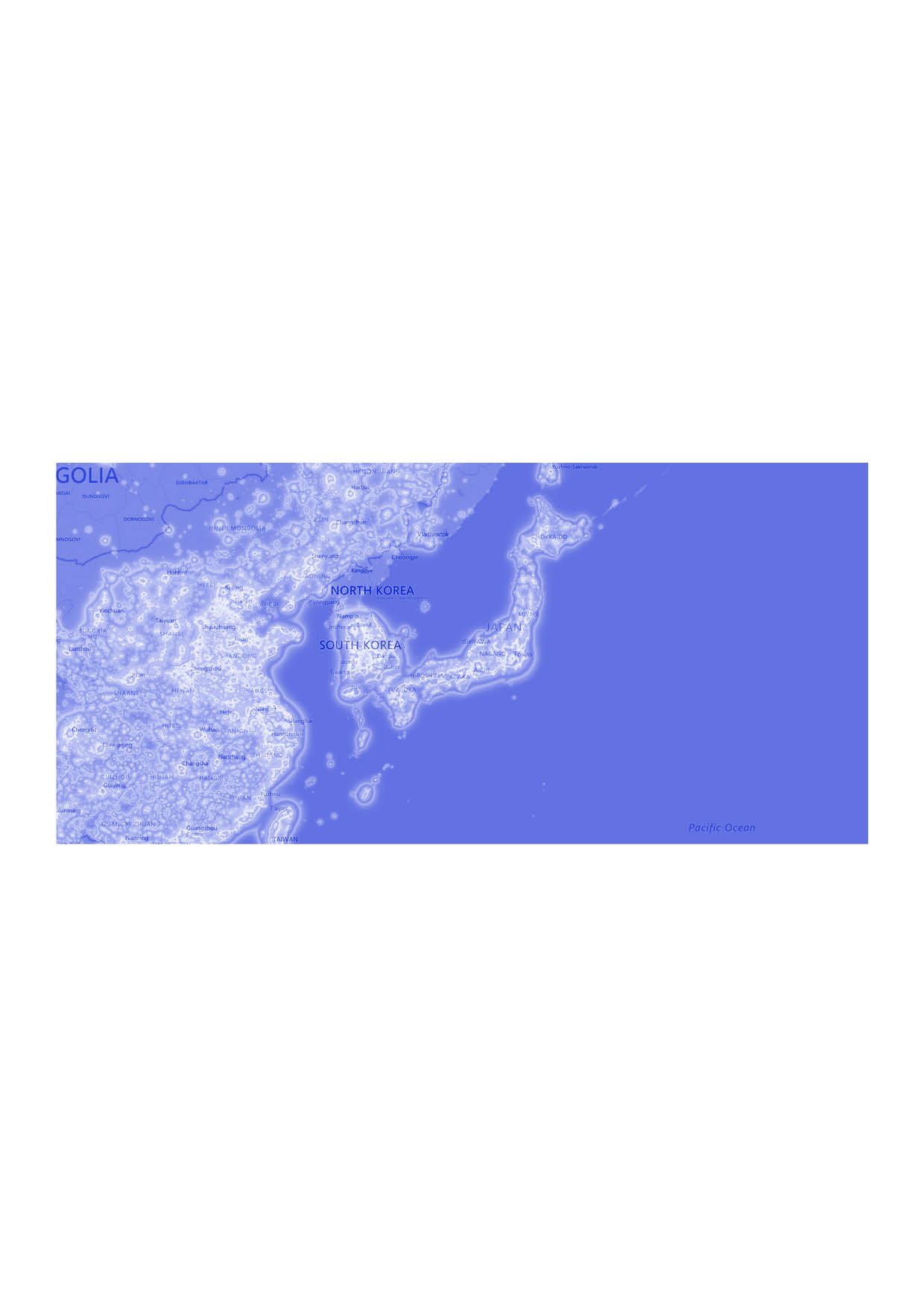
Light Pollution
Failure of a system, Light, Consumption, Waste, Recycle, National, Tokyo, Economy, Image
While Hong Kong is the most light polluted city, other cities that are facing this problem and that are often cited by institutions that study this type of pollution include Las Vegas, Tokyo, Seoul and New York.1 Trying to face these problems and keep the light pollution under moderation, the Tokyo government adopted a nonmandatory, voluntary approach and guidelines without binding force for all external lighting installations. There is no mandatory regulation governing external lighting in Tokyo. Most of the light pollution regulations in some cities and towns of Japan have been initiated and enforced at the local level. At the national level, the Ministry of the Environment (MOE) has published voluntary light pollution control guidelines to help local authorities formulate light pollution control measures.2
Beginning from the early 1990’s, light pollution complaints included reflections from walls and excessive illumination late at night. According to the Ministry of Environment of Japan, light pollution caused by artificial light does not accumulate in the environment and does not have direct effects on human health the way that air and water pollution do. Following a specific strategy of eliminating light pollution of the night sky, the Bisei-cho Township in Oda-gun, which belongs to the Okayama Prefecture was innovative in enacting regulations to attack this problem in 1989.3 In Tokyo, Light Pollution Control Guidelines, The Manual for Local Planning of Lighting Environment and The Guidebook on Light Pollution Preventive Measures are technical guidelines for the prevention of light pollution. Based on findings, the “Light Pollution Control Guidelines” were prepared defining specific measures to cope with light pollution. The parameters used to measure and control the impacts of external lighting and the limiting values recommended for minimizing the impacts zoning control for regulating/assessing external lighting, curfew time for regulating external lighting, limitation of obtrusive light on residential units for assessment of/control on light trespass, limitation of glare effect on road users (drivers, cyclists, pedestrians) and limitation of upward light ratio (ULR) to control sky glow.4 Following these guidelines, Tokyo, while being one of the most illuminated cities holds its light pollution levels in a moderate stage according to recent studies.
1. Ngarambe Jack, Kim Gon, “Sustainable Lighting Policies: The Contribution of Advertisement and Decorative Lighting to Local Light Pollution in Seoul, South Korea”, Accessed March 10, 2020. www.mdpi.com/journal/sustainability
2. Environment Bureau, The Government of Hong Kong Special Administrative Region, “ENB 's Consultancy Agreement No. EG08-051/2: Consultancy Services for Study on Overseas Practices in Guiding and Regulating External Lighting”, Accessed March 10, 2020. https://www.enb.gov.hk/sites/default/files/en/node67/guiding_regulating_txt.pdf
3. Ministry of Environment, Government of Japan, “Quality of the Environment in Japan 1994”, Accessed March 13, 2020. https://www.env.go.jp/en/wpaper/1994/eae230000000040.html
4. Environment Bureau, The Government of Hong Kong Special Administrative Region, “ENB 's Consultancy Agreement No. EG08-051/2: Consultancy Services for Study on Overseas Practices in Guiding and Regulating External Lighting”, Accessed March 10, 2020.
See Photos
Visit Ephemera: 29
Failure of a system, Light, Consumption, Waste, Recycle, National, Tokyo, Economy, Image
While Hong Kong is the most light polluted city, other cities that are facing this problem and that are often cited by institutions that study this type of pollution include Las Vegas, Tokyo, Seoul and New York.1 Trying to face these problems and keep the light pollution under moderation, the Tokyo government adopted a nonmandatory, voluntary approach and guidelines without binding force for all external lighting installations. There is no mandatory regulation governing external lighting in Tokyo. Most of the light pollution regulations in some cities and towns of Japan have been initiated and enforced at the local level. At the national level, the Ministry of the Environment (MOE) has published voluntary light pollution control guidelines to help local authorities formulate light pollution control measures.2
Beginning from the early 1990’s, light pollution complaints included reflections from walls and excessive illumination late at night. According to the Ministry of Environment of Japan, light pollution caused by artificial light does not accumulate in the environment and does not have direct effects on human health the way that air and water pollution do. Following a specific strategy of eliminating light pollution of the night sky, the Bisei-cho Township in Oda-gun, which belongs to the Okayama Prefecture was innovative in enacting regulations to attack this problem in 1989.3 In Tokyo, Light Pollution Control Guidelines, The Manual for Local Planning of Lighting Environment and The Guidebook on Light Pollution Preventive Measures are technical guidelines for the prevention of light pollution. Based on findings, the “Light Pollution Control Guidelines” were prepared defining specific measures to cope with light pollution. The parameters used to measure and control the impacts of external lighting and the limiting values recommended for minimizing the impacts zoning control for regulating/assessing external lighting, curfew time for regulating external lighting, limitation of obtrusive light on residential units for assessment of/control on light trespass, limitation of glare effect on road users (drivers, cyclists, pedestrians) and limitation of upward light ratio (ULR) to control sky glow.4 Following these guidelines, Tokyo, while being one of the most illuminated cities holds its light pollution levels in a moderate stage according to recent studies.
1. Ngarambe Jack, Kim Gon, “Sustainable Lighting Policies: The Contribution of Advertisement and Decorative Lighting to Local Light Pollution in Seoul, South Korea”, Accessed March 10, 2020. www.mdpi.com/journal/sustainability
2. Environment Bureau, The Government of Hong Kong Special Administrative Region, “ENB 's Consultancy Agreement No. EG08-051/2: Consultancy Services for Study on Overseas Practices in Guiding and Regulating External Lighting”, Accessed March 10, 2020. https://www.enb.gov.hk/sites/default/files/en/node67/guiding_regulating_txt.pdf
3. Ministry of Environment, Government of Japan, “Quality of the Environment in Japan 1994”, Accessed March 13, 2020. https://www.env.go.jp/en/wpaper/1994/eae230000000040.html
4. Environment Bureau, The Government of Hong Kong Special Administrative Region, “ENB 's Consultancy Agreement No. EG08-051/2: Consultancy Services for Study on Overseas Practices in Guiding and Regulating External Lighting”, Accessed March 10, 2020.
See Photos
Visit Ephemera: 29


